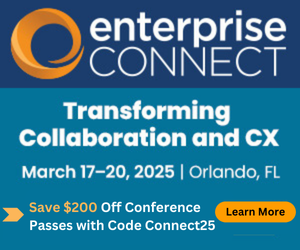Is Your Head in the Clouds? – Part 2Is Your Head in the Clouds? – Part 2
Second in a two-part series exploring a move to a cloud contact center, with a focus on implementation best practices
June 4, 2019

In Part 1 of this article, I looked at decision factors for moving to a cloud contact center solution and delineated several decision criteria for evaluating potential solution providers. Now I’ll address some of the major pitfalls to avoid and best practices to adopt as your enterprise migrates to the selected cloud solution. While this isn’t a comprehensive, point-by-point implementation guide, following these guidelines should increase your chances for a successful implementation.
A 2012, but still relevant, Ovum study, “Lead Analysis, Customer Experience and Interaction,” states:
“An open mind is important when deploying a cloud-based contact center. Start with a clean slate and think ‘outside the box’ when it comes to extending the capabilities of the cloud-based contact center to business practices. You should not replicate any business processes that were dictated by the technology constraints of legacy equipment.”
An example of this is the ability for cloud-based solutions to facilitate the expansion of your agent pool to off-site resources. However, when doing this, you must carefully review current processes, workflows, agent training mechanisms, quality assurance (QA) methods, etc., in order to be effective in this area.
The remainder of this article deals with other areas to carefully address during your implementation.
1. Change Management Processes – Particularly in the public cloud arena, solution providers are constantly introducing new features and functionality to all users simultaneously. Particularly if your environment has significant integrations with third-party or outside applications and/or systems, you must have the following change management processes in place:
A means for the solution provider to provide early indication of the new functionality, so that your IT team can assess the impact on the current environment
A “sandbox” environment to enable testing of the new functionality prior to its launch into your production environment
A communications channel that extends to the contact center to notify staff of the changes and their go-live dates
When issues occur from a release, a means for the contact center to report directly to IT, which must be prepared to deal with the solution provider for quick resolution
2. Strategic Plan Based on the Cloud Provider’s Technology Roadmap – With the continual addition and modification of features and functions, it’s important for the business’ contact center and IT staff to be fully engaged with the timing of those releases. This is important for these reasons:
The contact center staff should be building the necessary workflows, processes, procedures, and knowledge base to align with the technology roadmap timeline.
The initial design of the contact center features and functions, discussed in the next section, should incorporate the planning for these capabilities, so that the transition to them doesn’t dramatically impact customers and agents.
Training module modifications for agents and supervisors should align with the technology roadmap timeline.
Click below to continue to Page 2: Three additional recommendation areas
3. Design of the Contact Center Features and Functions – This is a critical area that requires several essential steps that cloud solution providers often fail to perform. Missing these steps opens the door for misaligned expectations as the implementation moves along.
The first step in any implementation should be a gap analysis by the enterprise customer, performed in conjunction with the cloud solution provider. This critical step will help to ensure that any essential existing features, functions, or reports aren’t missed during the design effort.
Based on the gap analysis, determine if any of the key performance metrics must be adjusted, based on calculations from the cloud solution provider. If the metrics must remain the same, work with the cloud solution provider to adjust calculations to enable this. If the metrics can change, make sure to communicate the changes to, and set the expectations of, those individuals who are responsible for reviewing the metrics. This should eliminate surprises after the implementation is complete.
Ensure that terminology is clear. We’ve often seen cloud provider design subject matter experts assume that the contact center team understands the terminology used to describe a solution’s features and functions. Level setting -- i.e., defining terminology and explaining how that terminology relates to the prior solution -- is critical in creating a proper design.
Educate the contact center staff on the features and functions being provisioned specifically for them. This is an important step that should be done prior to design sessions. This will enable the business to determine how best to utilize these features in its environment.
As much as is feasible, the design of features, functions, reporting, and routing should be a collaborative effort between the business and the cloud solution provider. On-site is preferred, because this allows for whiteboarding and focused participation.
Include members of your internal compliance and security teams in the design process, and ensure that they are part of the signoff for the new design.
4. Testing of the Initial Design – As with any new implementation, testing prior to “go live” is critical with the implementation of a cloud solution. However, some elements may be more important to test in this environment than others, because they aren’t under the business’s control. Included in this area may be the need to stress test the environment to ensure that at least the following elements are configured properly, and that responses are timely:
The connectivity from the cloud solution provider to the business site or sites
Integrations between the cloud solution and any back-end customer relationship management (CRM) systems
Agent and supervisor desktop performance and connectivity
Clearly, features, routing, and reporting designs should also be tested thoroughly during this timeframe.
5. Training and Knowledge Transfer – Cloud solution providers don’t always understand the need to properly train the agent and contact center management staff. Standard manuals and remote Web-based training oftentimes aren’t sufficient to make these effective users of the solution. A smart business will ensure that customized training and knowledge transfer is included in the implementation process.
6. On-site Cutover Support – This is also an area where the cloud solution providers often fall short. An effective training and knowledge transfer strategy will help, but having on-site resources to assist the agents and supervisors when the system goes live is as important in a cloud implementation as it is in an on-premises solution. It must be accommodated in the initial contract.
Don’t buy into the “cloud is easy” camp and allow short-cuts in the implementation process. This won’t serve you well and could put the success of your implementation at risk. And if the implementation isn’t successful, its ripple effect impacts your customers… and probably not positively.
"SCTC Perspectives" is written by members of the Society of Communications Technology Consultants, an international organization of independent information and communications technology professionals serving clients in all business sectors and government worldwide.
About the Author
You May Also Like





